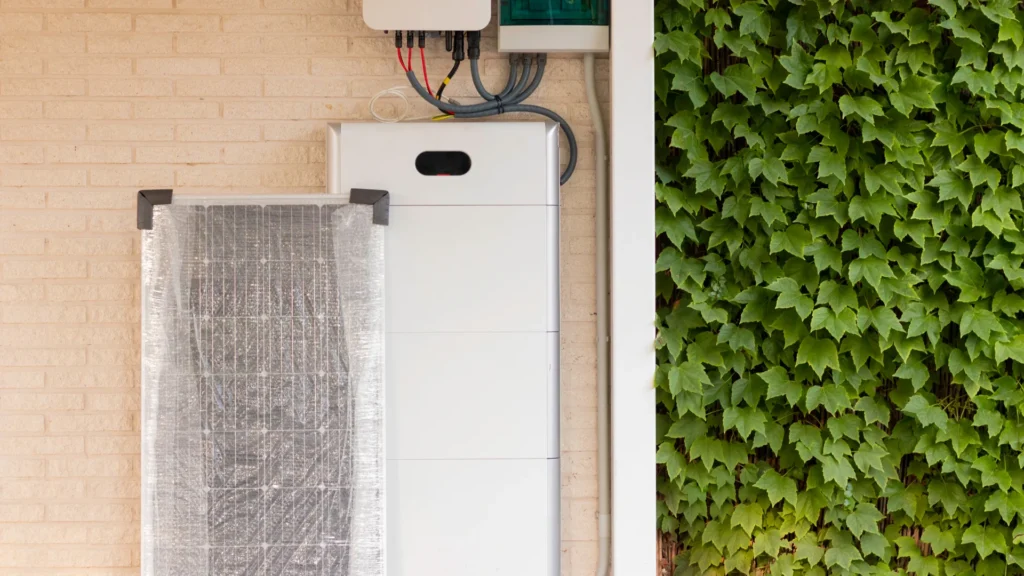
As concerns about climate change and the environment continue to rise, solar power systems with photovoltaic (PV) cells are becoming an increasingly popular option. These systems harness the sun’s energy through glass panels, converting sunlight into electricity. Understanding how a solar panel system works requires knowledge of its main components – including inverters, batteries, racking, and more. The battery bank stores excess electricity for use when the sun isn’t shining, while the grid provides backup power when needed.
In this article, we will explore each of these components in detail to provide readers with a comprehensive understanding of how they work together to create a functional solar power system. We will also discuss important considerations when selecting a solar power system – such as efficiency ratings, installation costs, and maintenance requirements – so readers can decide which system best suits their needs. Ultimately, this article aims to demystify the complex world of solar power systems so that readers can feel empowered to take control of their energy consumption while contributing to a more sustainable future.
This section provides a comprehensive overview of the fundamental concepts and technologies of harnessing clean and renewable solar energy using photovoltaic (PV) cells for residential and industrial purposes. The importance of solar power as a sustainable alternative to fossil fuels cannot be overstated, especially considering its potential to reduce running costs and carbon emissions. Solar panels utilize the photovoltaic effect and are the backbone of any solar power system, with options like polycrystalline and monocrystalline panels available. When selecting a panel, important criteria include space availability, warranty period, efficiency rating, technology type, and cost. This ensures efficient sun energy utilization and seamless integration with the grid.
Charge controllers regulate voltage and current from the PV cells to batteries while preventing overcharging to ensure consistent performance. Different types include simple one or two-stage controllers, pulse width modulation (PWM) 3-stage controllers, or maximum power point tracking (MPPT) controllers. Batteries are essential for backup charge storage when excess energy is produced that can be stored for later use during periods without sunlight. Different types of batteries, such as bypass diodes, are used depending on the storage capacity required.
Inverters convert DC power supply from solar panels into usable AC electrical energy that can run home appliances through an uninterruptible power supply (UPS). Many types of inverters are available in the market according to one’s needs, such as string inverters, which are cheaper but less efficient than microinverters, which provide higher output per panel but at a higher cost. Proper maintenance is crucial for ensuring the longevity and efficiency of a solar power system. It should also be noted that installation may require an electrical inspection beforehand using either imperial or metric systems for wiring installation.
Overall, understanding the electrical panel, PV cell, and grid is crucial when considering installing a solar power system due to their impact on efficiency ratings and cost-saving benefits over time. Regular maintenance ensures the optimum performance of these materials throughout the life cycle of the equipment while helping minimize environmental pollution caused by fossil fuel consumption.
Through converting sunlight into electricity, photovoltaic cells, also known as solar panels, serve as a critical component in harnessing solar power for residential and industrial consumers. These high-quality silicon wafers, wired together and held in place by sturdy frames, back sheets, and glass panes, make up the advanced solar panel technology. The manufacturing process involves cutting the silicon into thin wafers treated with dopants to create positive and negative charge carriers. When sunlight hits the surface of these charged cells, it dislodges electrons which then flow through an electrical circuit to produce usable electricity. To complete a solar power setup, solar batteries can be used to store excess energy for later use.
When selecting photovoltaic cells for a solar installation, one important consideration is their efficiency ratings. More efficient panels convert more light into electricity in a solar power setup than less efficient ones. Durability testing is another crucial factor for a solar energy system, as these panels must withstand weather elements such as strong winds, hailstorms, or heavy snowfalls over many years. Proper maintenance can help extend the lifespan of the solar batteries further while minimizing any potential performance issues caused by debris buildup or shading.
Finally, it’s worth noting the environmental impact of producing photovoltaic cells. While solar power may be considered “clean” once operational, carbon emissions are still associated with the manufacturing process that cannot be ignored. However, research continues to improve production techniques to reduce waste and conserve resources during cell production.
In summary, monocrystalline photovoltaic (PV) cells are essential in capturing solar energy for use in residential and commercial applications. Efficiency ratings, durability testing, and maintenance requirements should all be considered when choosing the best-suited panel. Additionally, considering environmental factors related to the manufacturing processes used in producing glass panels is important.
The solar inverter is crucial in converting the DC power generated by photovoltaic cells into usable AC power for residential and commercial applications. Several types of inverters are available to suit various needs, including string inverters, microinverters, and power optimizers. Each type has its advantages and disadvantages regarding efficiency, installation tips, maintenance best practices, brand comparison, and future innovations.
Inverter efficiency is essential when selecting an inverter for your solar panel system. The higher the efficiency rating of an inverter, the more electricity it can convert from DC to AC power. This results in greater energy savings over time and a lower carbon footprint. However, highly efficient inverters may be more expensive than their less efficient counterparts.
When installing a solar panel system with an inverter, there are several tips to keep in mind for optimal performance. First, ensure that the inverter’s capacity matches the output of your solar panels. Second, close the inverter to your electrical panel for easier connection and monitoring. Thirdly ensure proper grounding of both solar panels and inverters.
Proper maintenance is crucial to ensure your solar panel system operates at peak efficiency throughout its lifespan. Maintenance best practices include regular cleaning of both solar panels and inverters using non-abrasive materials such as soap or water with soft brushes or cloths. It is also recommended to conduct annual inspections by professional technicians who can identify any issues before they become major problems.
In conclusion, choosing the right type of solar inverter ensures maximum energy production from your photovoltaic (PV) system while minimizing costs and potential environmental impact. By considering factors such as efficiency ratings during selection processes; following installation tips like proper placement near electrical panels; conducting regular maintenance checks like cleaning or inspection; comparing brands based on their feature’s benefits versus drawbacks too- you’re setting yourself up for success!
This section discusses the equipment necessary for securely mounting solar panels, a crucial aspect of solar panel installation that ensures optimal energy production and long-term durability. Installation methods can vary depending on whether the panels are mounted on a roof or ground. Roof mounting typically involves attaching racks to the existing roof structure, while ground mounting requires more extensive excavation and construction.
When choosing mounting equipment for a PV system, weight considerations are crucial. The weight of the silicon cells and any additional racking or support structures must be considered to ensure stability and security. Additionally, maintenance requirements should be considered. The selected system should allow for easy access to panels for cleaning and repairs, ensuring the longevity of the grid.
Finally, weather durability is an essential factor in choosing mounting equipment. The system must withstand high winds, heavy rain or snow loads, and extreme temperatures without compromising performance or safety. Properly selected and installed mounting equipment will help ensure that a solar power system operates effectively for many years while minimizing maintenance costs and maximizing energy savings.
Maximizing the efficiency and longevity of solar power systems requires careful consideration of all components, including the crucial role of pv batteries in storing excess energy for later use. As battery technology advancements continue, solar panel system owners have access to various silicon battery options that can meet their unique needs. Here is a review of some important considerations regarding pv batteries.
Battery capacity: The amount of energy a battery can store is an important factor when choosing a solar battery. It’s essential to select a battery with sufficient capacity to store excess energy generated by the solar panels during peak sunlight hours.
Backup power options: Backup power sources are necessary for extended periods without sunlight or during power outages. Solar panel systems with storage batteries provide this option and can be paired with other backup power solutions, such as diesel generators or wind turbines.
Battery maintenance tips for solar power setup: Proper maintenance is critical for maximizing the lifespan and performance of solar panels and solar cells. Some essential tips are regular inspections, cleaning terminals, monitoring water levels (for lead-acid batteries), and avoiding overcharging.
In addition to selecting the right type of solar battery, it’s also important to consider the environmental impact and disposal challenges associated with them. As part of an effort toward sustainability, various initiatives aimed at properly recycling used batteries from renewable energy sources like solar panels.
In summary, while technological advancements offer many choices for storing excess electricity generated by your solar panel system – ensuring optimal performance requires careful consideration when choosing which is best suited for your needs. Battery capacity considerations should go hand-in-hand with backup power requirements while implementing proper maintenance practices can help prolong its lifespan, ultimately contributing towards sustainable living.
Efficient utilization of solar energy relies heavily on the appropriate selection and proper maintenance of each component, and the charge controller plays a crucial role in regulating voltage and current from solar panels to batteries. It ensures that batteries are not overcharged or discharged, thus extending their lifespan. The charge controller comes in various types: simple one and two-stage, PWM 3-stage, and MPPT controllers. Selecting the right type depends on factors like battery capacity, system size, and expected daily usage.
The charge controller’s importance cannot be overstated since it protects batteries from damage caused by overcharging or discharging. Overcharging can cause hydrogen gas buildup in sealed lead-acid batteries, leading to explosions, while discharging too much can significantly reduce battery performance and lifespan. A good quality charge controller can prevent voltage spikes that may damage other system components, like inverters or connected appliances.
Installation and maintenance are critical aspects when dealing with a charge controller. The installation process should follow manufacturer instructions for maximum efficiency and safety purposes. Proper grounding techniques should also be observed to avoid electric shock risks or equipment damage from lightning strikes. Maintenance involves regular inspection to ensure all connections are tight. Wires are not corroded, and no physical damages exist on any part of the device, among other checks recommended by manufacturers.
Advancements in technology have led to better-designed charge controllers that incorporate features like LCDs for easy monitoring of charging status for solar batteries; adjustable settings like charging voltage levels for solar cells; temperature compensation functions that adjust charging rates according to ambient temperatures; Bluetooth connectivity for remote monitoring using smartphones or tablets; among other features aimed at improving overall system performance and user experience with solar panels. This review will discuss these advancements and their impact on the industry.
Selecting an appropriate type of charge controller is essential in ensuring the efficient utilization of solar energy while protecting your battery investment from premature damage caused by overcharging or discharging too much. Good installation practices combined with regular maintenance checks will help prolong your system’s longevity while keeping it running smoothly. Advancements in technology have led to better-designed charge controllers that provide added features like temperature compensation, Bluetooth connectivity, and LCDs for ease of use.
Integrating monitoring software in solar power systems is a significant development that provides real-time performance data, enabling users to optimize energy production and detect potential issues promptly. This software compatibility enables the user to access data analysis tools that can help identify trends and patterns in energy usage, leading to the efficient use of solar power. With remote monitoring capabilities, users can monitor the system’s performance from anywhere, giving them greater control over their energy consumption.
Maintenance alerts are another feature of solar panel monitoring software that contributes significantly to system efficiency by providing notifications when maintenance is required for the solar cells. These alerts ensure prompt attention to any issue with the silicon-based solar panels before it becomes more severe, reducing downtime and increasing system availability. Energy optimization for maximizing energy production and reducing operational costs is essential, and monitoring software comes in handy by providing accurate data on power output, temperature, and battery charge levels.
In summary, monitoring software has revolutionized solar power systems with its real-time performance data capabilities, which enable users to optimize energy production and detect potential issues promptly. Remote monitoring allows for easy access from anywhere with internet connectivity, while maintenance alerts help avoid costly downtimes by alerting users when maintenance is required. Energy optimization ensures maximum efficiency through accurate data analysis tools that identify trends and patterns in energy usage for efficient solar panel system operation.
In the previous subtopic, we reviewed how monitoring software could help track the performance of silicon solar cells. Now, let’s shift our focus to another important component of a solar power system – disconnect switches.
Disconnect switches are essential switching devices that ensure safety during maintenance or repair work on the solar panel system. These switches cut off the flow of electricity from the photovoltaic panels to all other components. This feature is particularly useful when technicians need to access certain parts for installation, repair, or replacement. Disconnect switches also safeguard against electrical fires and electrocution during maintenance procedures.
The installation process for disconnect switches is relatively simple. It involves connecting wires directly to the switchgear box and attaching them to an external surface with screws or bolts. The switch should be visible near the solar power system equipment and within easy reach of authorized personnel only.
Proper maintenance of solar panel disconnect switches is crucial to ensure their continued reliability and functionality. Routine inspections can prevent hazards such as corrosion, overheating, or loose connections leading to electrical arcing or fire. Industry trends indicate that modern solar panels disconnect switches now have features such as arc-fault protection and remote operation for added safety.
Disconnect switches are important in maintaining safety standards while dealing with a solar power system’s electrical components. Their installation process is straightforward, but regular checks ensure they continue functioning correctly over time. With advancements in technology offering additional safety features like arc-fault protection becoming common among newer models, it is clear why these devices are an indispensable part of any solar panel setup today. Regularly reviewing the disconnect switches and the cells is crucial for optimal performance and safety.
Wiring and fuse box connections are fundamental components of a solar power system that ensure proper electrical grounding for cells, provide protection against overcurrent situations, and facilitate the safe transfer of electricity from the solar panels to the inverter. Electrical grounding is an essential safety feature that prevents electric shock by creating a low-resistance path for current to flow into the ground. The wiring installation should be done in accordance with local building codes and standards to prevent accidents caused by improper installations. Hiring a licensed electrician for installation is recommended to ensure optimal system performance and review the cells.
Fuse box safety is another crucial aspect of a solar power system. It protects your equipment from damage caused by overcurrent situations or short circuits. A properly installed fuse box will have fuses or circuit breakers that can handle the maximum amperage load of your solar panels without tripping or blowing out. Regular maintenance checks on your equipment can prevent potential hazards such as loose connections or faulty wiring.
Voltage regulation is crucial when installing a solar power system to protect your equipment and ensure safety. Fluctuations in voltage can harm cells and pose risks. Voltage regulators maintain consistent voltage, even during peak sunlight periods.
Proper wiring and fuse box connections are critical for installing solar power systems. They play key roles in ensuring safe operation, preventing damage to equipment, optimizing energy output efficiency, and maintaining the integrity of cells. Fuse box safety, wiring installation tips, electrical grounding, voltage regulation, and maintenance checklist are essential to consider when planning a successful solar panel installation project.
Proper installation and maintenance of a solar power system are essential for ensuring safe operation, preventing equipment damage, and optimizing energy output efficiency. The installation involves several steps, including wiring and fuse box connections, voltage regulation, and electrical grounding. It is crucial to consult a professional installer to ensure all components are properly installed according to local building codes.
In addition to the initial installation process, regular maintenance is necessary to keep the solar power system functioning at its best. Maintenance tips include keeping the panels clean and debris-free, checking battery levels regularly, monitoring voltage regulation, and inspecting all components for signs of wear or damage. By following these guidelines for proper maintenance, homeowners can maximize their investment in renewable energy by ensuring that their systems operate efficiently.
Future advancements in solar technology promise even greater environmental impact and cost savings. One such advancement is solid-state batteries that could make solar panel systems more efficient. Additionally, pressure should be put on electricity supply boards to purchase residential solar power as an option for consumers looking to reduce carbon emissions while saving money on utility bills.
Understanding the main components of a solar panel system is crucial both during the installation process and throughout ongoing maintenance efforts. By working with knowledgeable professionals during initial setup and following best practices for upkeep, homeowners can enjoy optimal energy output efficiency while minimizing the risk of equipment damage or safety hazards. With continued advancements in technology promising even greater benefits from renewable energy sources like solar power systems in years ahead, it’s clear that investing in this technology now represents an important step toward a cleaner environment and greater financial independence for households everywhere.
In conclusion, understanding the main components of a solar panel system is crucial for anyone considering investing in this renewable energy source. The Photovoltaic cells are the heart of the solar panel system and convert sunlight into usable electricity. The solar inverter is responsible for converting DC power generated by the panels into AC power that can power household appliances.
Mounting equipment includes racking and mounting hardware which securely fastens the panels to roofs or other surfaces. Solar batteries store excess energy generated during peak sunlight hours for later use when sunlight is unavailable. Monitoring software allows users to track their energy production and consumption, while disconnect switches provide safety measures in case of emergency.
Finally, proper wiring and fuse box connections ensure the efficient transfer of electricity from the panels to your home’s electrical system. Considering all these factors, one can make an informed decision when selecting a solar power system that best suits their needs. With increasing concerns about climate change and sustainability, investing in solar power systems is beneficial and crucial for a greener future.
Calculating the solar panel system sizing requirements involves several factors, including energy consumption, cost analysis, and roof space availability. To determine the size of the solar panel system needed for a home or business, it is important to assess the amount of electricity used daily. This can be done by reviewing past utility bills or using an online calculator. Next, consider the available roof space and orientation of the building to determine how many panels can be installed. Cost analysis should also be considered when selecting a system size, as larger systems may have higher upfront costs but can provide greater long-term savings. By carefully considering these factors and working with a reputable solar installer or engineer, individuals can accurately size their solar panel system to meet their energy needs while maximizing efficiency and cost-effectiveness.
Government incentives, tax credits, and rebates are available for those interested in installing a solar panel system. These financial benefits can help offset the initial cost of installation and provide long-term energy savings. The exact amount of these incentives varies by state and may depend on factors such as the size of the system or the type of technology used. However, it is important to note that these programs are often time-limited and subject to change, so it is recommended that individuals research their options thoroughly before making a decision. Ultimately, investing in a solar panel system can save money and contribute to a more sustainable future.
The typical lifespan of a solar panel system is around 25 to 30 years, with warranties ranging from 20 to 25 years. Proper maintenance is crucial for the system’s longevity and efficiency, including regularly cleaning panels to remove dirt and debris that can impact their performance. The weather also plays a role in maintenance requirements, as extreme temperatures or severe weather conditions can cause damage to the panels or other components. It is important to follow manufacturer guidelines for cleaning methods and schedule regular inspections by professionals to address any issues before they become major problems. Overall, while solar panel systems require some upkeep, they are relatively low-maintenance compared to traditional energy sources, providing long-term benefits and cost savings while reducing carbon emissions.
If you are considering a DIY solar panel system installation, taking safety precautions and understanding the equipment requirements are important. Installing a solar panel system may require specialized tools, such as wire strippers and crimpers, and knowledge of electrical wiring and building codes. The installation cost can vary depending on the size of the system and whether you hire professionals for certain tasks, such as obtaining permits. Permit requirements vary by location; research before beginning installation is important. While installing a solar panel system yourself can provide a sense of freedom and potential cost savings, it is recommended that individuals consult with professionals or attend training courses before attempting an installation themselves.
Energy monitoring tools have become an essential part of solar panel systems. They provide real-time monitoring, data analysis, and remote monitoring capabilities that enable system optimization. These tools allow users to track their energy production and consumption, identify any issues or inefficiencies in the system, and make necessary adjustments to improve performance. Real-time monitoring of a solar panel system provides accurate information about how much energy is produced and consumed at any given time. Data analysis allows for identifying patterns or trends in energy usage, which can help users make informed decisions about optimizing their system. Remote monitoring enables users to use a smartphone or computer to monitor their solar panel system anywhere. Overall, energy monitoring tools are crucial for ensuring optimal performance and maximizing the benefits of a solar panel system while allowing individuals to efficiently manage their renewable energy source.
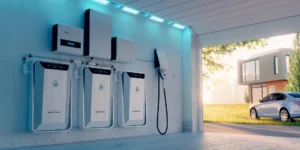
What Is The Expected Lifespan Of Batteries In A Residential Solar System? Overview of Residential Solar Systems Residential solar systems have gained popularity in recent
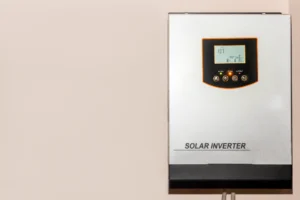
Difference Between String And Microinverters In A Solar Panel System? The world is gradually shifting towards renewable energy sources, with solar panel systems being one
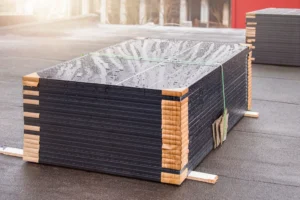
How Do I Choose The Right Solar Panel Manufacturer? As the world becomes more environmentally conscious, many individuals are turning towards solar energy to reduce
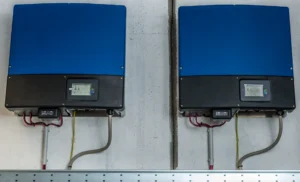
How Do I Choose The Right Inverter For My Solar Panels System? Choosing the right inverter for your solar panel system is a crucial decision
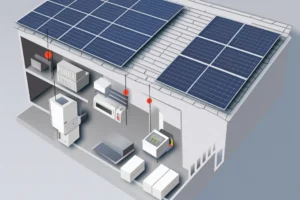
What Kind Of Backup Power Options Are Available With A Solar Panel System? Solar panel systems have become increasingly popular for residential and commercial use
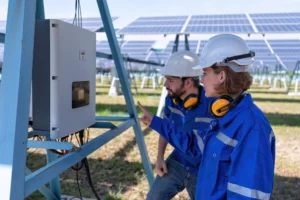
What Is The Expected Lifespan Of A Solar Inverter? Solar energy is becoming increasingly popular as a source of renewable energy. With the rise in